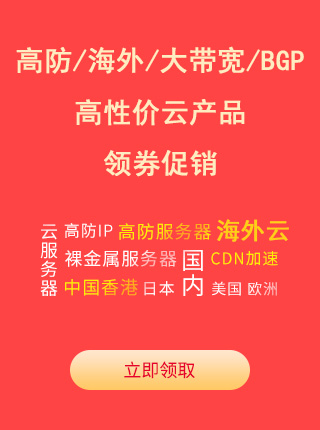python数据增强做了什么,图像增强的实现考虑什么
Admin 2022-09-05 群英技术资讯 917 次浏览
 很多朋友都对“python数据增强做了什么,图像增强的实现考虑什么”的内容比较感兴趣,对此小编整理了相关的知识分享给大家做个参考,希望大家阅读完这篇文章后可以有所收获,那么感兴趣的朋友就继续往下看吧!
很多朋友都对“python数据增强做了什么,图像增强的实现考虑什么”的内容比较感兴趣,对此小编整理了相关的知识分享给大家做个参考,希望大家阅读完这篇文章后可以有所收获,那么感兴趣的朋友就继续往下看吧!数据增强做了什么
数据增强是非常重要的提高目标检测算法鲁棒性的手段,学习一下对身体有好处!
数据增强其实就是让图片变得更加多样。比如说原图是一个电脑

如果不使用数据增强的话这个电脑就只是一个电脑,每次训练的电脑都是这样的样子的,但是我们实际生活中电脑是多样的。
因此我们可以通过改变亮度,图像扭曲等方式使得图像变得更加多种多样,如下图所示,尽管亮度,形态发生了细微改变,但本质上,这些东西都依然是电脑。

改变后的图片放入神经网络进行训练可以提高网络的鲁棒性,降低各方面额外因素对识别的影响。
目标检测中的图像增强
在目标检测中如果要增强数据,并不是直接增强图片就好了,还要考虑到图片扭曲后框的位置。
也就是框的位置要跟着图片的位置进行改变。
如果大家对我的目标检测代码有少许研究的话,应该都可以看到。我特别喜欢用这个数据增强代码:
def get_random_data(annotation_line, input_shape, random=True, max_boxes=20, jitter=.5, hue=.1, sat=1.5, val=1.5, proc_img=True):
'''random preprocessing for real-time data augmentation'''
line = annotation_line.split()
image = Image.open(line[0])
iw, ih = image.size
h, w = input_shape
box = np.array([np.array(list(map(int,box.split(',')))) for box in line[1:]])
# 对图像进行缩放并且进行长和宽的扭曲
new_ar = w/h * rand(1-jitter,1+jitter)/rand(1-jitter,1+jitter)
scale = rand(.25, 2)
if new_ar < 1:
nh = int(scale*h)
nw = int(nh*new_ar)
else:
nw = int(scale*w)
nh = int(nw/new_ar)
image = image.resize((nw,nh), Image.BICUBIC)
# 将图像多余的部分加上灰条
dx = int(rand(0, w-nw))
dy = int(rand(0, h-nh))
new_image = Image.new('RGB', (w,h), (128,128,128))
new_image.paste(image, (dx, dy))
image = new_image
# 翻转图像
flip = rand()<.5
if flip: image = image.transpose(Image.FLIP_LEFT_RIGHT)
# 色域扭曲
hue = rand(-hue, hue)
sat = rand(1, sat) if rand()<.5 else 1/rand(1, sat)
val = rand(1, val) if rand()<.5 else 1/rand(1, val)
x = rgb_to_hsv(np.array(image)/255.)
x[..., 0] += hue
x[..., 0][x[..., 0]>1] -= 1
x[..., 0][x[..., 0]<0] += 1
x[..., 1] *= sat
x[..., 2] *= val
x[x>1] = 1
x[x<0] = 0
image_data = hsv_to_rgb(x) # numpy array, 0 to 1
# 将box进行调整
box_data = np.zeros((max_boxes,5))
if len(box)>0:
np.random.shuffle(box)
box[:, [0,2]] = box[:, [0,2]]*nw/iw + dx
box[:, [1,3]] = box[:, [1,3]]*nh/ih + dy
if flip: box[:, [0,2]] = w - box[:, [2,0]]
box[:, 0:2][box[:, 0:2]<0] = 0
box[:, 2][box[:, 2]>w] = w
box[:, 3][box[:, 3]>h] = h
box_w = box[:, 2] - box[:, 0]
box_h = box[:, 3] - box[:, 1]
box = box[np.logical_and(box_w>1, box_h>1)] # discard invalid box
if len(box)>max_boxes: box = box[:max_boxes]
box_data[:len(box)] = box
return image_data, box_data
里面有一些比较重要的参数如:
scale = rand(.25, 2)jitter=.5;hue=.1;sat=1.5;val=1.5;
其中:
1、scale代表原图片的缩放比率,rand(.25, 2)表示在0.25到2之间缩放。
2、jitter代表原图片的宽高的扭曲比率,jitter=.5表示在0.5到1.5之间扭曲。
3、hue=.1,sat=1.5,val=1.5;分别代表hsv色域中三个通道的扭曲,分别是:色调(H),饱和度(S),明度(V)。
实际效果如下:
原图:

增强后:

全部代码
全部代码构成如下:
from PIL import Image, ImageDraw
import numpy as np
from matplotlib.colors import rgb_to_hsv, hsv_to_rgb
def rand(a=0, b=1):
return np.random.rand()*(b-a) + a
def get_random_data(annotation_line, input_shape, random=True, max_boxes=20, jitter=.5, hue=.1, sat=1.5, val=1.5, proc_img=True):
'''random preprocessing for real-time data augmentation'''
line = annotation_line.split()
image = Image.open(line[0])
iw, ih = image.size
h, w = input_shape
box = np.array([np.array(list(map(int,box.split(',')))) for box in line[1:]])
# 对图像进行缩放并且进行长和宽的扭曲
new_ar = w/h * rand(1-jitter,1+jitter)/rand(1-jitter,1+jitter)
scale = rand(.25,2)
if new_ar < 1:
nh = int(scale*h)
nw = int(nh*new_ar)
else:
nw = int(scale*w)
nh = int(nw/new_ar)
image = image.resize((nw,nh), Image.BICUBIC)
# 将图像多余的部分加上灰条
dx = int(rand(0, w-nw))
dy = int(rand(0, h-nh))
new_image = Image.new('RGB', (w,h), (128,128,128))
new_image.paste(image, (dx, dy))
image = new_image
# 翻转图像
flip = rand()<.5
if flip: image = image.transpose(Image.FLIP_LEFT_RIGHT)
# 色域扭曲
hue = rand(-hue, hue)
sat = rand(1, sat) if rand()<.5 else 1/rand(1, sat)
val = rand(1, val) if rand()<.5 else 1/rand(1, val)
x = rgb_to_hsv(np.array(image)/255.)
x[..., 0] += hue
x[..., 0][x[..., 0]>1] -= 1
x[..., 0][x[..., 0]<0] += 1
x[..., 1] *= sat
x[..., 2] *= val
x[x>1] = 1
x[x<0] = 0
image_data = hsv_to_rgb(x) # numpy array, 0 to 1
# 将box进行调整
box_data = np.zeros((max_boxes,5))
if len(box)>0:
np.random.shuffle(box)
box[:, [0,2]] = box[:, [0,2]]*nw/iw + dx
box[:, [1,3]] = box[:, [1,3]]*nh/ih + dy
if flip: box[:, [0,2]] = w - box[:, [2,0]]
box[:, 0:2][box[:, 0:2]<0] = 0
box[:, 2][box[:, 2]>w] = w
box[:, 3][box[:, 3]>h] = h
box_w = box[:, 2] - box[:, 0]
box_h = box[:, 3] - box[:, 1]
box = box[np.logical_and(box_w>1, box_h>1)] # discard invalid box
if len(box)>max_boxes: box = box[:max_boxes]
box_data[:len(box)] = box
return image_data, box_data
def normal_(annotation_line, input_shape):
'''random preprocessing for real-time data augmentation'''
line = annotation_line.split()
image = Image.open(line[0])
box = np.array([np.array(list(map(int,box.split(',')))) for box in line[1:]])
return image, box
if __name__ == "__main__":
with open("2007_train.txt") as f:
lines = f.readlines()
a = np.random.randint(0,len(lines))
line = lines[a]
image_data, box_data = normal_(line,[416,416])
img = image_data
for j in range(len(box_data)):
thickness = 3
left, top, right, bottom = box_data[j][0:4]
draw = ImageDraw.Draw(img)
for i in range(thickness):
draw.rectangle([left + i, top + i, right - i, bottom - i],outline=(255,255,255))
img.show()
image_data, box_data = get_random_data(line,[416,416])
print(box_data)
img = Image.fromarray((image_data*255).astype(np.uint8))
for j in range(len(box_data)):
thickness = 3
left, top, right, bottom = box_data[j][0:4]
draw = ImageDraw.Draw(img)
for i in range(thickness):
draw.rectangle([left + i, top + i, right - i, bottom - i],outline=(255,255,255))
img.show()
# img = Image.open(r"F:\Collection\yolo_Collection\keras-yolo3-master\Mobile-yolo3-master/VOCdevkit/VOC2007/JPEGImages/00000.jpg")
# left, top, right, bottom = 527,377,555,404
# draw = ImageDraw.Draw(img)
# draw.rectangle([left, top, right, bottom])
# img.show()到此这篇关于“python数据增强做了什么,图像增强的实现考虑什么”的文章就介绍到这了,更多相关内容请搜索群英网络以前的文章或继续浏览下面的相关文章,希望大家以后多多支持群英网络!

免责声明:本站发布的内容(图片、视频和文字)以原创、转载和分享为主,文章观点不代表本网站立场,如果涉及侵权请联系站长邮箱:mmqy2019@163.com进行举报,并提供相关证据,查实之后,将立刻删除涉嫌侵权内容。
猜你喜欢
-
Python numpy线性代数怎么理解,有哪些知识点
这篇文章主要介绍了Python numpy之线性代数与随机漫步,线性代数,矩阵计算,优化与内存;比如矩阵乘法,分解,行列式等数学知识,是所有数组类库的重要组成部分
-
LayerNorm参数怎么写,LayerNorm的具体用法是什么
LayerNorm中不会像BatchNorm那样跟踪统计全局的均值方差,因此train()和eval()对LayerNorm没有影响。
-
python中如何利用turtle画多种趣味图
这篇文章主要介绍了python 教程实现 turtle绘制海龟绘图,文章基于python的相关资料展开turtle绘制海龟绘图的详细内容,需要的小伙伴可以参考一下
-
Python是如何读取合并单元格的,方法是什么
要求给定指定的行、列以及对应的工作表作为参数,能够正确解析合并单元格,获取指定单元格的值。如果直接根据行列获取对应单元格的值,则合并单元格非左上角的其他单元格都会获取到None值。
-
Python条件语句有多少种用法?你知道几种?
这篇文章主要给大家分享Python条件语句的用法,对新手学习条件语句具有一定的借鉴和学习价值,感兴趣的朋友可以参考一下,希望大家阅读完这篇文章能有所收获,下面我们一起来学习一下吧。
成为群英会员,开启智能安全云计算之旅
立即注册Copyright © QY Network Company Ltd. All Rights Reserved. 2003-2020 群英 版权所有
增值电信经营许可证 : B1.B2-20140078 粤ICP备09006778号 域名注册商资质 粤 D3.1-20240008





